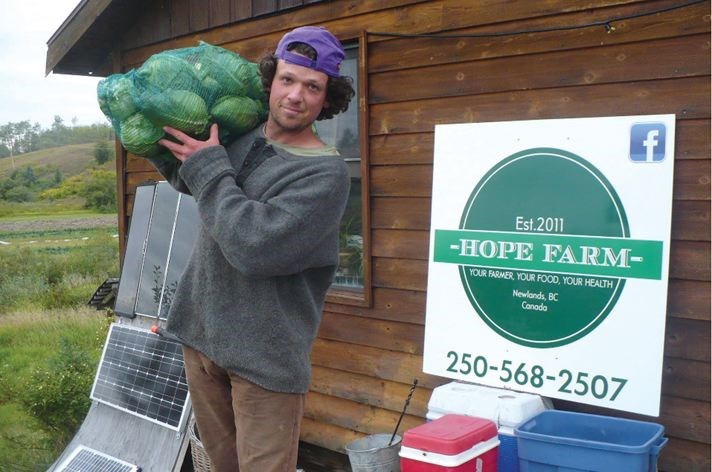A Prince George area farmer says a provincial government move to make it more difficult for companies to plant trees on agricultural land in order to receive carbon credits does not go far enough.
Land owners will now have to win permission for the use from the Agricultural Land Commission for plots larger than 20 hectares under a regulatory change announced this week.
The change followed discussions with stakeholders, including the B.C. Cattlemen's Association and the B.C. Agriculture Council, according to the province.
But Andrew Adams, who co-owns Hope Farm Organics, a 60-hectare operation near Giscome, takes a different view.
"To be honest, if the province wants to have the people's best interest at heart, and also the economy providing jobs for local people, then the planting of trees on ALR land should be just squashed," Adams said Thursday.
"What really needs to be done is there needs to be governmental help in helping new farmers access this land.
"The land is sitting idle and nobody's using it and the companies are taking advantage of it by planting trees so they look nice for all their effluent they're pumping into rivers and streams across the world."
Adams suggested the government-backed low-interest loans to help new farmers purchase land as a better way to deal with the problem and to promote locally-grown food and so-called "food security."
He said decent farm land typically goes for about $2,000 an acre and a 50-per-cent down payment is required for such purchases. That works out to $160,000 for a quarter section, or 160 acres.
He said the Eaglet Lake Farmers Institute, which has about 20 members, has written a letter to the provincial government in support of that position.
"The farmers that are selling this land, I don't blame them," Adams said. "They need to make their money, this is their investment, and no one is stepping up to the plate to purchase this land - no new farmers.
"That's the root of the problem, there is no incentive, there is no help, for new and young farmers to access this land, so it's being taken advantage of by other industry."
As far as he knows, Adams said the practice has occurred on "only a few fields" in this part of the province.
"But that's a few fields too many," he added. "If you take a look at the number of farms that are actually producing food in this region for the population, it's extremely small and it's getting smaller every year."
The province said the move provides clarity and follows discussions with a private company, left unnamed, that had been planting coniferous trees on land in the ALR under a program to sequester carbon and promote the company's carbon neutrality.
"The company is reviewing their program to ensure that it is meeting its objectives, and is supported by local communities and stakeholders and has decided not to make any new offers to purchase land, or plant trees for the purpose of carbon sequestration on their existing land while they are conducting their review," the province said.
The change also means applications to plant trees on agricultural land will be referred to regional district directors. There are about 391,000 hectares of agricultural reserve land in the Fraser-Fort George Regional District.



